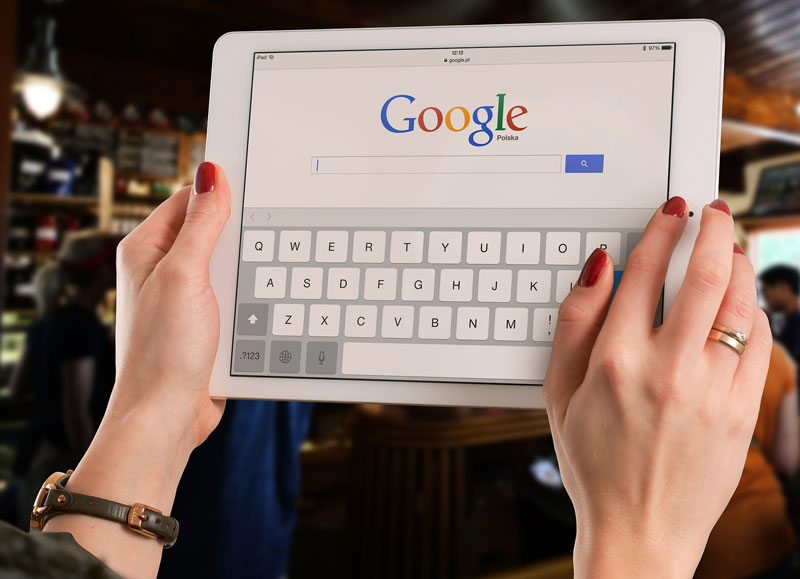
How Technology is Transforming Education: Why Google is Your Best Learning Companion
Originally published in August 19, 2019. Last updated on April 15, 2025
In today’s rapidly evolving digital age, the landscape of education is undergoing significant transformation. While the qualifications and expertise of teachers remain essential, numerous other factors significantly shape educational standards. Elements such as classroom environments, student-teacher interactions, teaching methodologies, and syllabus designs profoundly impact how effectively students learn. Within this complex educational ecosystem, technology, particularly platforms like Google, has emerged as a powerful complement—and in some cases, a potential alternative—to traditional teaching methods.
In this article, we’ll explore how technology, specifically Google, is enhancing educational standards and reshaping how we approach learning.
Redefining Education: From Traditional Classrooms to Digital Learning
Traditional classrooms have long been the cornerstone of education. They provide face-to-face interaction, group discussions, and structured learning environments. However, this traditional setting often demands compromise from students. Each learner has unique strengths, weaknesses, and a distinct pace for comprehending new information. Group teaching methods inevitably mean that the educator must target the average learner, potentially leaving behind those who require either more personalized attention or accelerated learning opportunities.
This is where technology steps in, revolutionizing the learning experience. Digital platforms, notably Google, provide educational resources accessible to everyone, anytime, anywhere. The fundamental benefit of technology in education is flexibility—students no longer have to rely solely on teacher availability or fixed classroom schedules. Instead, learning becomes personalized, accessible, and tailored specifically to individual needs.
The Shift to Self-Paced Learning
One of the most significant benefits of integrating technology into education is the ability to accommodate individual learning speeds. Every student processes information differently. While some may quickly grasp concepts through visual presentations, others might prefer reading detailed articles or studying practical examples. Traditional teaching methods struggle to cater effectively to such diverse learning preferences.
Google and related online resources, on the other hand, excel precisely in this domain. Students can choose from various formats such as articles, videos, graphics, podcasts, interactive exercises, and online quizzes. This variety ensures that each learner can discover the best possible method to understand complex concepts at their own pace, significantly enhancing educational outcomes.
Teaching as a Business: Challenges and Opportunities
The commercialization of education is an undeniable reality. Many teachers today, whether intentionally or unintentionally, focus more on the transactional aspect of teaching—where payment often supersedes genuine concern about student comprehension. Although educators have every right to compensation for their skills and efforts, the risk of education becoming overly business-oriented can compromise the quality of learning.
Technological solutions like Google help address this issue. They democratize learning by providing countless free resources, minimizing the reliance on expensive tutors or premium educational services. Students gain control over their educational journey, significantly reducing the impact of commercial interests on the quality and accessibility of learning.
Teachers vs. Technology: A Harmonious Relationship
Contrary to common misconceptions, technology isn’t aiming to eliminate the role of teachers altogether. Instead, digital resources like Google complement human teaching and improve the quality and accessibility of education. Educators benefit from technology as it reduces repetitive administrative tasks, allowing them to focus more on meaningful interactions with students. Rather than replacing teachers, Google and similar platforms amplify the effectiveness of human instruction by providing supplementary resources, instant access to information, and endless opportunities for student engagement.
Human teachers bring empathy, mentorship, personalized guidance, and emotional intelligence—qualities that technology alone cannot fully replicate. Yet, the digital world provides the support system teachers need, freeing them to engage more deeply in one-on-one interactions, mentoring, and nurturing critical thinking skills.
Embracing a Digital Future: Why Google is an Effective Learning Companion
Google, with its vast array of educational resources such as Google Scholar, Google Classroom, and YouTube (a Google-owned platform), is arguably one of the most comprehensive learning platforms available today. Its resources span virtually every subject imaginable—from science and technology to history, mathematics, and literature.
Google Scholar, for instance, provides students and researchers easy access to millions of academic articles, papers, and research documents. Google Classroom creates structured virtual environments, allowing teachers to share resources, assignments, and feedback effortlessly. YouTube provides visual and interactive content, making complex topics easier to understand through engaging video tutorials. These diverse tools empower learners to adopt a highly individualized approach, facilitating deeper, more meaningful learning experiences.
The Importance of Visual Learning and Interactive Media
Modern learners are increasingly attracted to visual content and interactive multimedia. Videos and interactive applications can simplify complex theories and present information in a more digestible form. Google’s YouTube, in particular, has become a central hub for visual learners, with countless educational channels dedicated to every imaginable topic.
Interactive media helps students engage actively with content rather than passively absorbing information. By enhancing interaction, technology boosts retention rates, understanding, and the practical application of knowledge. Visual and interactive learning experiences foster curiosity, critical thinking, and creativity—key components of comprehensive educational growth.
The Digital Divide: Challenges and Optimistic Perspectives
Despite the obvious advantages, technology-based learning faces its challenges. Not everyone has equal access to technology, creating a digital divide between communities with resources and those without. However, optimistic developments are already underway. The increased affordability of mobile devices, widespread internet coverage expansion, and global initiatives promoting digital education are gradually narrowing this gap. Google itself has launched numerous global programs aimed at improving digital access in underserved communities, demonstrating a tangible commitment to making technology-driven education universally accessible.
Preparing for Tomorrow: Developing Future Skills
Education in the digital age doesn’t merely involve mastering traditional subject areas. It also includes developing critical digital literacy skills essential for future employment and life. Google’s wide-ranging tools help students build these essential skills, including problem-solving, research techniques, digital communication, and analytical abilities. By using technology daily, students naturally enhance their proficiency in digital platforms—skills highly valued in modern workplaces.
As the global economy becomes increasingly digital, students proficient in technology-driven learning methods are at a distinct advantage. They enter the workforce prepared, adaptable, and familiar with the digital tools that modern industries demand.
Conclusion: A New Era in Learning
In summary, while the importance of qualified, passionate teachers cannot be overstated, technology—particularly Google—offers immense potential to enhance and revolutionize education. It provides flexibility, personalization, affordability, and interactivity in learning that traditional classrooms alone might struggle to achieve. Technology is not an adversary of educators but a powerful ally that enhances the effectiveness of teaching and deepens student engagement.
As we continue forward into the digital era, embracing technology’s role in education is no longer optional—it’s essential. Google’s vast educational resources and accessible platform represent an optimistic future where learning is engaging, inclusive, and individualized. Technology-enabled education promises not just smarter students but empowered global citizens capable of meeting the demands of a rapidly changing world.
Final Thoughts
Optimistically, technology-driven education signals a transformative shift toward inclusive, personalized, and highly effective learning experiences. Google, as your ever-available educational companion, symbolizes this shift—always ready to empower learners, anytime, anywhere, opening doors to limitless possibilities.
With technology on our side, the future of education looks bright indeed.




No comment yet, add your voice below!